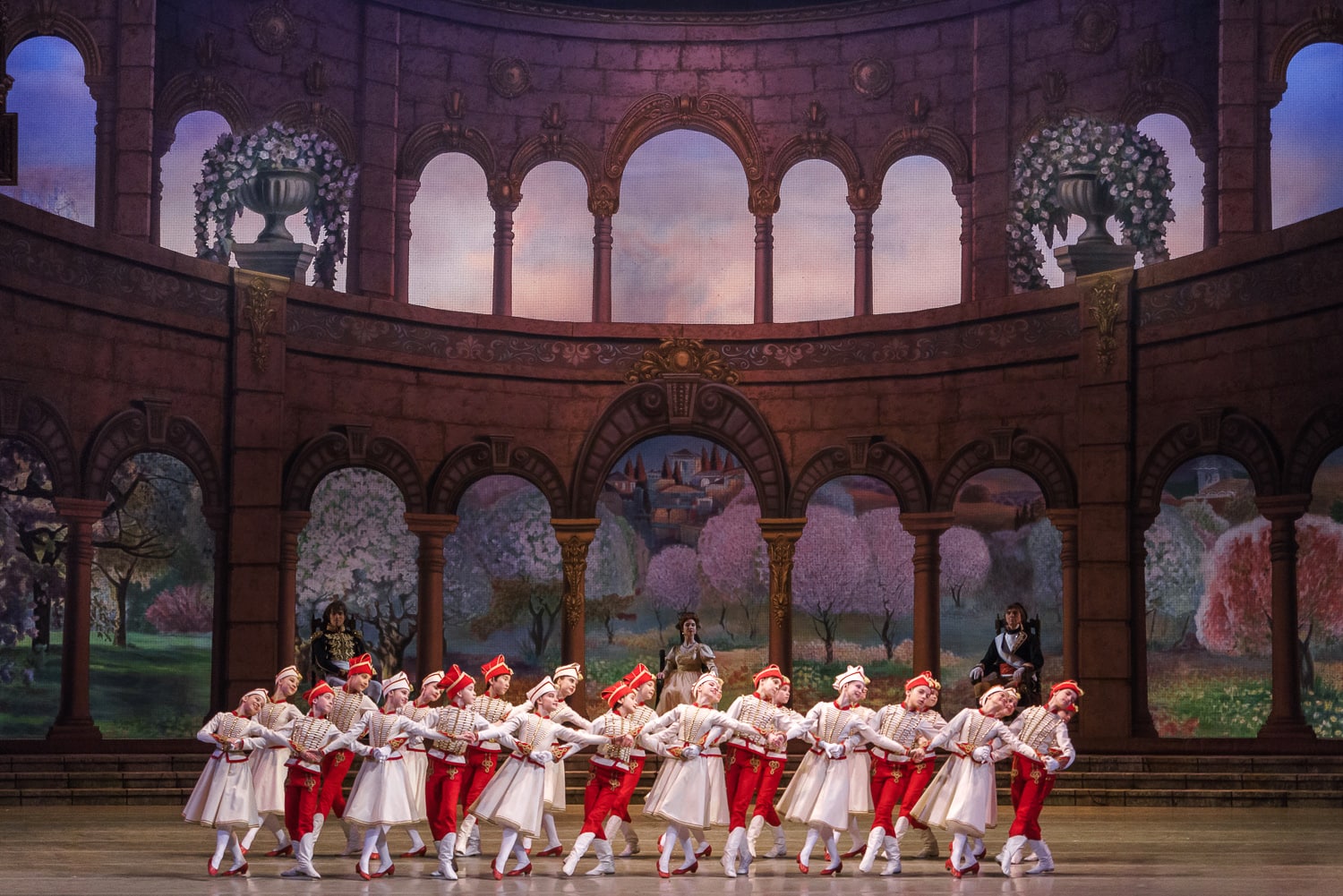Ballet, like opera, has a love-hate relationship with its 19th-century repertoire. Contrived plots, truly embarrassing cultural stereotypes, crowd-pleasing but horribly dated choreography that simply has to be included no matter what—you’re really stuck.
Plus, reminding the kids why these classics matter gets harder all the time.

So to some extent, I can sympathize with The Mariinsky Ballet’s choreographer Yuri Smekalov, who was tasked with tweaking the classic Paquita for a modern audience. Made famous by productions first in Paris and then in St. Petersburg, where the great Marius Petipa put his immortal stamp on the material, it is impossible to escape the lure and the pitfalls of this “timeless” tale.
The whole thing, naturally, is set in Spain–that exotic, semi-orientalized space where northern Europeans projected their ids, using the locale to indulge in all manner of syncopated rhythms and hot dance moves you would never dare try at home. And where those “loose” gypsy women danced without corsets, enabling them to, you know, really bust a move. And rob you blind, of course…
So the heroine of the title is, of course, a noblewoman kidnapped at birth by gypsies, taught how to dance and steal by a pack of utterly charming rakes. She also, of course, attracts the attentions of a young nobleman—Andrés—who instantly runs away to join her band of gypsies, where he learns all those hip gypsy dance moves.
(A bit like Elvis learning how to swivel those hips, but I digress…)
Of course, this being the 1840’s, these lovebirds get thrown in prison, only to have Paquita’s noble origins revealed. Once released, she gets her noble dad to spring her seeming-gypsy-but-really-upper-crust boyfriend from the slammer, and –this being, again, the 1840’s—there is an entire act which consists of nothing but showy dance numbers, ostensibly in celebration of their wedding. During which, the bride and groom get to show off even more of their flawless technique.
I am deconstructing the plot because, frankly, it’s a bit contrived. But it’s also a tremendous opportunity for an accomplished company like the Mariinsky to pull out the stops and dazzle you with their mastery of the form. The show—story aside—is a feast for the eyes, with gorgeously colorful costumes and brilliantly-executed scenic decorations, with moments of pure joy and a healthy dose of good humor.
Smakalov’s choreographic edits may leave storytelling by the wayside, but they create an opening for Maria Khoreva—who danced Paquita on Wednesday night—and Konstantin Zverev (her Andrés) to truly shine. And shine they certainly do, at the head of a company brimming with talent.
By far the most exciting sequences in Paquita belong to the band of gypsies, whose loose-fitting clothes enable them to swish and leap in ways decent folk just did not do back in the day. The leader of the band is a dead-ringer for Inigo Montoya, and his charisma lit up the stage every time he came out.

Another truly delightful part of this Paquita is the smartly-costumed children of the Vaganova Academy, whose precision and charm brought down the house. True, they dance without pirouettes (they’re too young to do that en-pointe stuff), but it is a pure joy to see sixteen young people evoking a Russian folk tradition that has little to do with the plot but plenty to do with their innate, finely-tuned talent at dance.
The only truly false note here is the Opera House management’s continued failure to properly light the Mariinsky ensemble. Two years ago with their production of Bayadere, I noted their tendency to leave some of the cast in the shadows—a problem which persists to this day. I can’t imagine why they lack the ability to adapt The Mariinsky Ballet’s original wide-stage productions to the narrower Opera House space. And it didn’t help that American stagehands openly talked and ran equipment backstage during Act II, so loud that even audience members in the mid-orchestra (myself included) could hear them. It’s an inexcusable failure of professional stagecraft, highly disrespectful of prominent visiting artists, and it does not bode well for future visiting companies.
Performance Time: 3 hours, with two intermissions.
Paquita performs through October 13, 2019, at the Kennedy Center Opera House – 2700 F Street, NW, in Washington, D.C. For tickets, call (202) 467-4600 or go online.




